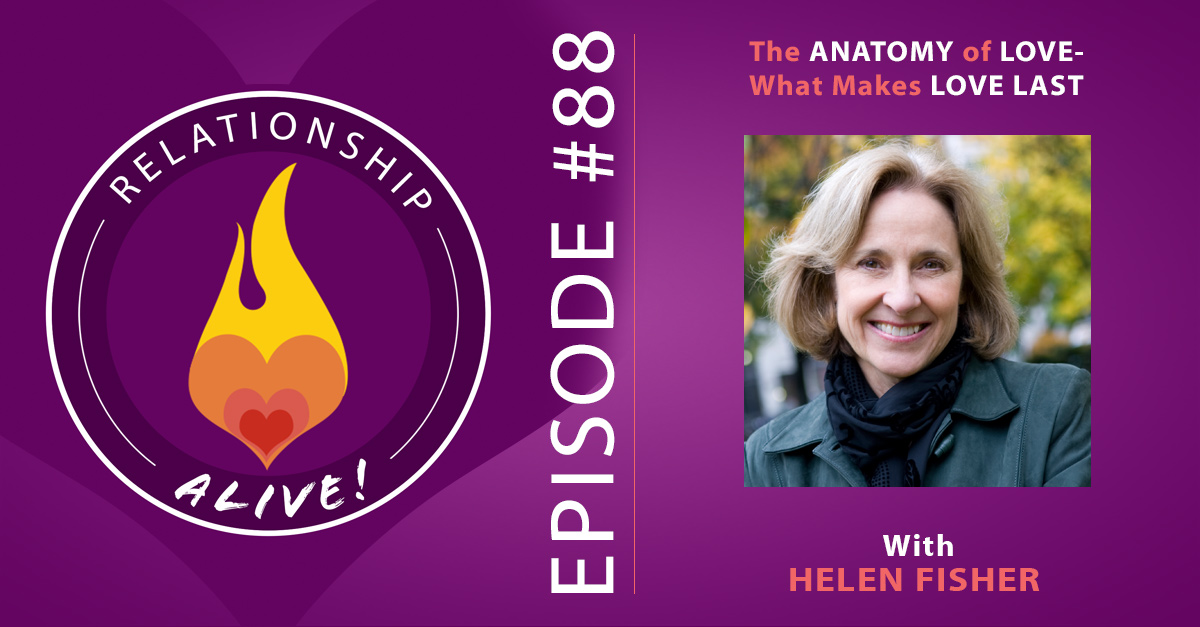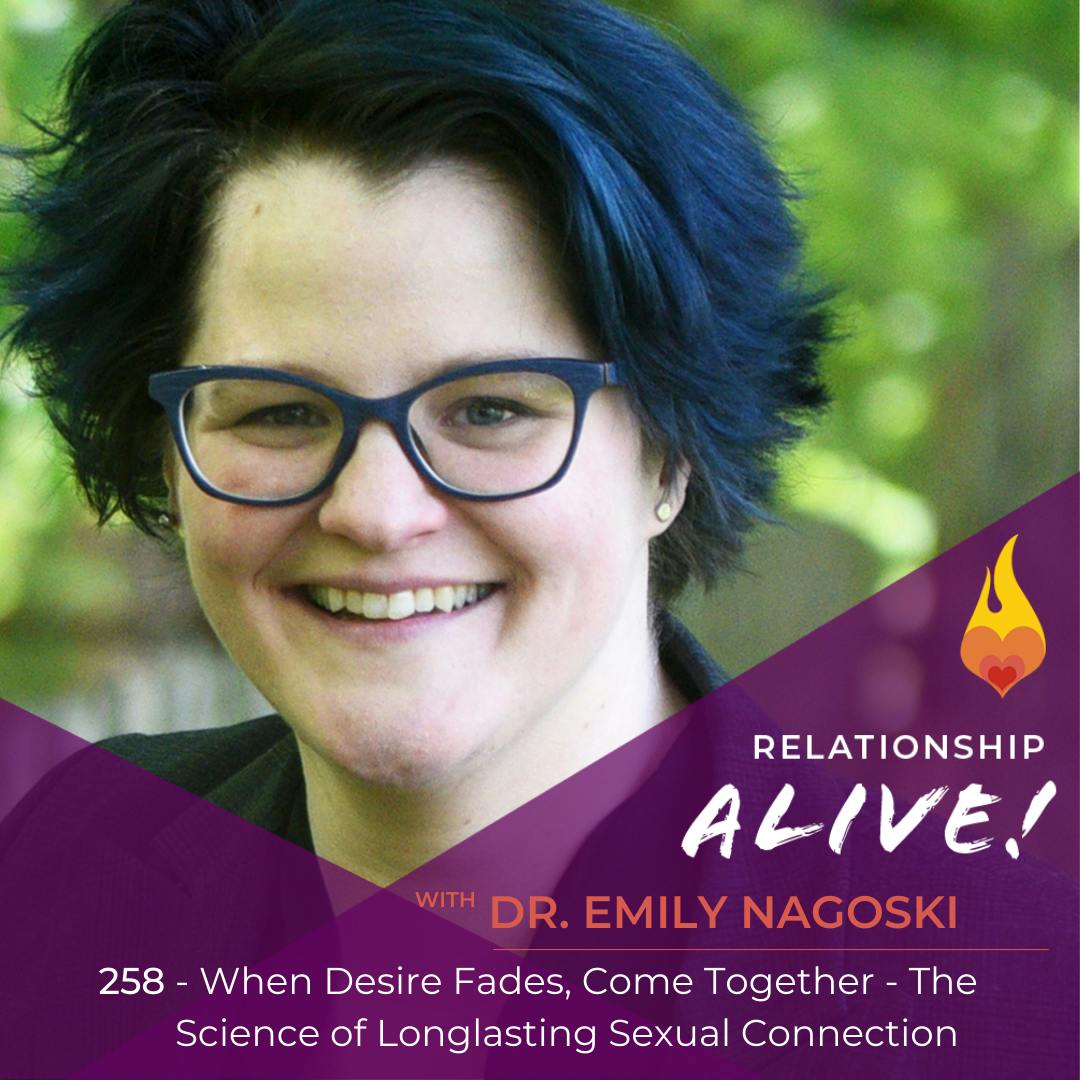Why do we love? Is it part of human evolution? What in our biology makes us strive for love and intimacy? And how do we make it last? This week we welcome Dr. Helen Fisher, TED talk all-start and author of Anatomy of Love - A Natural History of Mating, Marriage and Why We Stray. In this episode we dive head first into how long-term partnerships fit into what makes us human - along with some thoughts about breaking up, serial monogamy, and what makes love last. Helen Fisher is the Chief Scientific Advisor to Match.com as well as a Senior Research Fellow at the Kinsey Institute. You’ll appreciate how her knowledge of the science of love can give us the roadmap to long-lasting happiness in relationship.
We are built to fall in love. Is the quest for long-term thriving monogamy futile? History, biology, and evolution show us that we are, in fact, built to create pair bonds. We are built to fall in love. Our brains are wired to feel intense feelings of romantic love and attachment. While there is biology to support attachment structures, there is also biology to support the drive to wander, and to cheat. To reconcile these concepts it is important to know that pair bonding is different than monogamy. Every individual, couple, and culture needs to figure out how to navigate what attachment in the context of romantic love means.
Serial monogamy? In hunting and gathering societies serial monogamy was not necessarily the golden standard or expectation for coupling. However, women and men tended to have 2-3 spouses during the course of their lives. We have most likely evolved to have a series of partnerships throughout our lives. While culture plays a major role in how this is expressed, we see it happening more and more in people in their 20s and 30s.
Before tying the knot. Research shows that over 50% of single Americans have had a one night stand or friends with benefits. This is not reckless, in fact, it very well might be helping establish healthier marriages. There is a current trend in the United States in which the pre-commitment stage of relationships is being extended. 67% of people who live with their significant other say they have not married yet because they are worried about divorce. That said, 81% of people who married later say they would marry the same person again if they had a second chance. The longer you are together pre-marriage, the more likely you are to try to stick together, and this results in a sharp decrease in divorce rates. This is true because the time spent together gives you the chance to really know who you are marrying, and give the relationship time to work itself out, or not.
4 year itch- Data shows that most people will divorce around 3-4 years of marriage. This is likely no coincidence. It takes 3-4 years to raise a child through infancy, and it seems evolutionarily beneficial to have evolved a predisposition for serial pair bonding linked with having one child at a time, and then to seek another partner as an adaptive strategy evolutionarily to have kids with different partners, creating genetic variety.
Rebuilding local community- We may be putting too much pressure and improbably expectations on our partnerships due to the fact that we have lost local community. It used to be that marriages were surrounded by family and community and could depend on help from others to help raise children. The loss of local community is a very serious issue facing contemporary marriages, and it is very important that we focus on rebuilding these social networks. Find, create, nurture, and invest in your friendship circles as an extension of and protection for, your primary relationship.
Happiness in the brain: Research results from the study of people in long term self-reported happy marriages shows an increase in activity in 3 brain regions. These three areas serve to facilitate the function of 1) empathy, 2) controlling our emotions, and 3) increasing our ability to overlook what we do not like about our partner and focus on what we do like (aka positive illusion). In order to keep all three of these basic brain systems alive it is important to do the following “magic combo”.
The Magic Combo:
Keep the romance alive with NOVELTY: Novelty drives up dopamine in thebrain and can foster intense feelings of romantic love.
Keep the feelings of deep attachment by STAYING IN TOUCH: Hold hands, sit together on the couch, walk arm in arm, sleep in each other’s arms… Anytime that you are in pleasant touch with someone you are driving up oxytocin levels which fosters the feeling of deep attachment.
Keep the sex drive alive by… having SEX: Sex is good for the body, the mind, and for the relationship. Pleasant and sensual stimulation and orgasm drives up dopamine and oxytocin levels in the brain therefore impacting both the sense of romantic love connection and deep attachment so critical for maintaining long-term partnerships.
Positive illusions: Our brains are very well built for deception. Use this to your advantage! Train your brain by using mindfulness and gratitude practices in order to have more control over what you focus on, and what you overlook. You can really build more capacity for attraction and love for your partner by increasing your ability and capability to shift how you see them. Instead of ruminating on the way your partner doesn’t do their morning dishes, choose to appreciate the cup of coffee they made you, etc…
Understand each other on a biological level. We are naturally drawn to some people rather than others, and much of this attraction is dependent on hormones and chemicals. The more you get to know different aspects of personality, and study your partner, the more you can give and get what each of you needs. Are they high testosterone? High estrogen? Low serotonin? High serotonin? Knowing each other on a biological level helps to turn differences into things to be celebrated, versus sources of consternation and frustration.
NOTE: Check out Helen Fisher’s quiz to figure this out below in the resource section.
Is technology changing the way we love? Dr. Helen Fisher posits that while technology is drastically changing the way we court, it cannot and is not changing the basic brain mechanics of how humans form attachments. She sees technology as helping, or hindering, relationship forming, and this is especially true for older citizens.
Deep relating: Continue to find ways together, and apart to nourish intimacy. This is likely going to require a constant balancing act of individual and partnership needs. Make time for deep relating, for it is in this time that you get to know and understand your partner in the ways they want to be understood, and then you can truly give them what they need. At the same time it is key that you continue to support each other’s individual and independent growth so as not to get over dependent or create claustrophobia within the coupledom. In a good relationship everyone feels like they’ve got a good deal and that it is balanced. Strive to create this sense of fulfilment for each other!
Resources:
Read Helen Fisher’s book Anatomy of Love and check out her other books too!
Take Helen Fisher’s quizzes here
Check out Helen Fisher’s speeches and articles on her website
Watch Dr. Helen Fisher’s TED talk The Brain In Love
https://www.neilsattin.com/helen Visit to download the show guide, or text “PASSION” to 33444 and follow the instructions to download the show guide to this episode with Helen Fisher
Our Relationship Alive Community on Facebook
Amazing intro/outro music graciously provided courtesy of:
The Railsplitters - Check them Out


